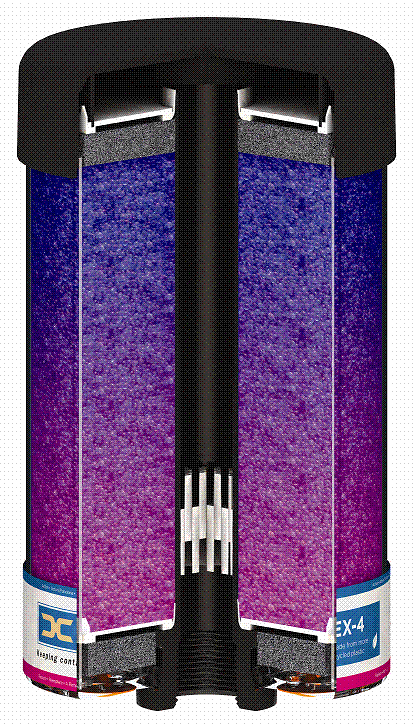Filtration of oil lubricated equipment is not a new concept. Automotive filters have been around since the 1920’s and by the mid 1940’s, pleated filters were being used on hydraulic equipment. However, a comparatively recent idea is to use filters to target clearance sized particles to promote a higher level of component reliability.

A desiccant breather, such as this one from Des-Case, lets a gearbox breath without letting water in.
Oil filters are a relatively simple system and work just as you imagine they do. In simple terms, the oil is forced through a filter media. Particles larger than the openings between the filter fibers get caught and essentially removed from the oil stream.
Of course, there is a whole lot more behind the physics of filtration. “We know that component life is maximized when particles at or around the size of the components sensitive clearances are removed,” says Jay Denslow with Des-Case Corporation. “The challenge is that many of the systems we operate today operate in an environment or industry that demands specific oil filters.”
With an increased attention to gear oil cleanliness and decreasing oil change frequencies, it has become increasingly important to apply lubrication best practices to increase the gearbox life cycle. “Not much has really changed with filters themselves, but the way we filter oil has. Contamination control is the single greatest opportunity for lengthening the life cycle of a wind turbine gearbox. Significant gains can be made with minimal investments due to an inverse relationship between lubrication quality and maintenance costs,” says Denslow.
Wind turbines present a unique set of challenges. Given the importance of production and the penalty of replacement costs, it’s vital that wind turbine gearboxes remain reliable throughout their life. “Gearboxes in wind turbines differ from those in high-speed machinery. In wind turbines, the impact of contaminants on slower turning gear drives is gradual and insidious. Nevertheless, the mean time between failure for gears and shaft-support bearings can be increased by as much as two to three times by maintaining optimum levels of fluid cleanliness and dryness,” says Denslow.
Two major factors―environmental (outside) and operational (location)―contribute to the challenge of maintaining clean and dry oil in wind turbine gearboxes.
Outdoor conditions lead to a surrounding air with particularly high humidity and frequent temperature fluctuations, which contaminates the oil and compromises lubricant quality. “Water contamination can cause corrosion, oil oxidation, additive drop-out, microbial growth, and hydrolysis. A desiccant breather with check valves on the gearbox case almost eliminates the breather’s exposure to the air entering or exiting the equipment – keeping water out while allowing the system to breathe as designed,” adds Denslow.
Remote locations and heights make wind turbines difficult to access and expensive to maintain, making it vital to increase the scheduled time between maintenance, reduce the cost of lubricant replacement, and protect the system from failure. Filtering oil is important, but carrying a filter cart up and into a nacelle is not an ideal way to complete this task. “However, a permanently mounted, continuous-duty offline system for difficult-to-access equipment is recommended. Many inline filters installed in wind turbines only filter down to 10 microns, while an offline filter typically filters down to 3 microns,” he says.
Filed Under: Filters, News




